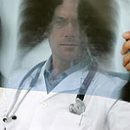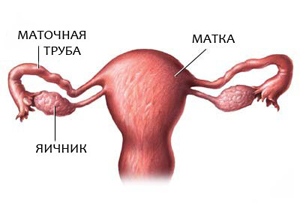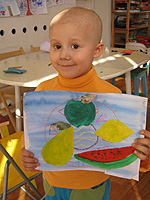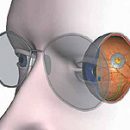Chemotherapy is the main method of treating oncological diseases. Chemotherapeutic preparations have a cytotoxic effect on cancer cells. The advantage of this treatment method is the possibility of intravenous administration of drugs.
Content
Concept of chemotherapy
Chemotherapy is the main type of medical treatment of most oncological diseases. There are a number of other methods of treatment, which, strictly speaking, are also chemotherapeutic, such as hormonal therapy and immunotherapy, but the term «chemotherapy» specifically means treatment with cytotoxic agents, t.E. violating the division of cancer cells, as a result of which new.
Advantage of chemotherapy
Chemotherapeutic preparations are injected into the bloodstream, where they circulate throughout the body. This consists of a huge advantage of chemotherapy in front of other methods of treating oncological diseases. It is often possible to remove all cancer cells by surgical intervention or radiation therapy, which are local methods, t.E. Their action is directed only for some one specific area of the body. This is explained by the fact that a certain number of cells can be separated from the primary tumor and in the blood flow falls into one or another part of the body, where it begins to grow, forming secondary tumors or metastases.
Since chemotherapeutic drugs are moved in the same way, they can hit these remote cells and secondary tumors in any site of the body. The first experience in the use of chemotherapeutic methods, whose action was based on this principle, was antibacterial therapy in infections. Antibiotics destroy bacteria causing an infection where they would be in the body.
However, by nature, the bacteria differ greatly from normal cells of the body, which makes it possible to create antibiotics that purposefully affect bacteria without harming normal cells. Meanwhile, cancer cells differ from normal very slightly. They lost the mechanism controlling their growth and reproduction, but otherwise most chemical processes occurring in the cells of both types, similar. Consequently, drugs affecting cancer cells are apparently damaged and normal cells. Although cancer cells are relatively damaged compared to the normal cells of the body and are less capable of self-restoration.
The use of chemotherapeutic methods is based on accounting for this defectiveness. Treatment usually lasts from one to several days, then take a break for several weeks. At this time, normal organism cells are restored, while cancer cells are restored only slightly. Subsequent cycles of drug treatment are aimed at further destruction of cancer cells, while normal cells will continuously restore.
Chemotherapy efficiency
Some types of oncological diseases are healing through only chemotherapy. However, for most types of cancer, it is still impossible, and drug treatment in such cases is carried out in order to control the development of the disease and its deterrence, as well as to facilitate the symptoms.
The main reason explaining why, with the help of chemotherapeutic methods, most types of cancer cannot be heal, lies in the fact that either cancer cells acquire resistance to drugs, or they have partial or complete resistance to them from the very beginning. For example, if with any cancer 99% of cells are sensitive to drugs, chemotherapy will eliminate 99% of the defeat, but will not have any influence on the remaining 1% cells that continue to grow.
Resistance to therapeutic drugs and incomplete destruction of cancer cells are essential obstacles to improving treatment efficiency and became the subject of intensive scientific research. Cancer cells acquire stability to a particular drug due to the development of biochemical processes, allowing to overcome damage caused by the cells by this drug.
One of the ways to solve this problem is to appoint several different drugs, each of which has a specific destructive effect on cancer cells. The development of several cell protection mechanisms at once is more difficult; therefore, the likelihood of continuous destruction of the tumor increases. This method of chemotherapy led to a significant increase in cure indicators in some types of cancer.
Another way to overcome sustainability is to appoint significantly higher doses of chemotherapeutic agents. The problem is that such high doses cause serious damage to normal cells, especially the bone marrow responsible for the blood formation. Such high doses are justified only in cases where a bone marrow or stem cell transplant is possible.
The larger the tumor, the greater the likelihood of its resistance to drugs. Therefore, if the primary tumor is removed surgically and there is a danger that a small amount of cancer cells has already spread to other parts of the body, then in order to avoid recurrence, when the treatment will already be carried out more difficult, immediately after surgery, you can proceed to chemotherapy to destroy all the remaining cancer cells. Such an approach is called adjuvant chemotherapy.
Methods for chemotherapy
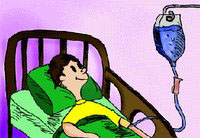 Chemotherapeutic preparations can be administered orally (through the mouth), but more often carried out intravenously (intravenous method). The purpose of such treatment is to introduce active anticancer agents in the bloodstream, on which they are transferred to cancer cells, wherever they were. Sometimes chemotherapeutic agents are administered directly into specific areas of the body, for example, in the spinal fluid or an intestine. In this case, the goal is to achieve a high concentration of the drug in this place.
Chemotherapeutic preparations can be administered orally (through the mouth), but more often carried out intravenously (intravenous method). The purpose of such treatment is to introduce active anticancer agents in the bloodstream, on which they are transferred to cancer cells, wherever they were. Sometimes chemotherapeutic agents are administered directly into specific areas of the body, for example, in the spinal fluid or an intestine. In this case, the goal is to achieve a high concentration of the drug in this place.
The easiest method of administering drugs is oral in the form of tablets or fluid, which makes it possible to take them at home without the help of a medical sister or doctor. However, this is a less reliable method compared to injections, since there is no confidence that when taking each dose in the body, the same amount of medication will be absorbed. The most common way is to introduce a chemotherapeutic drug in Vienna, or by injection, or more often drip method. Typically, such treatment should be carried out in the hospital outpatient or stationary. Each dose of medication is injected over a period from one to several days at intervals of 1-4 weeks (depending on the treatment regimen) with a total number of courses from 4 to 8. Sometimes low doses are continuously introduced, for which a small portable pump is used. On it, medicines are poured into the body for several weeks or even months. The pump is attached to the belt or worn in the bag, and patients can engage in their usual activities.


